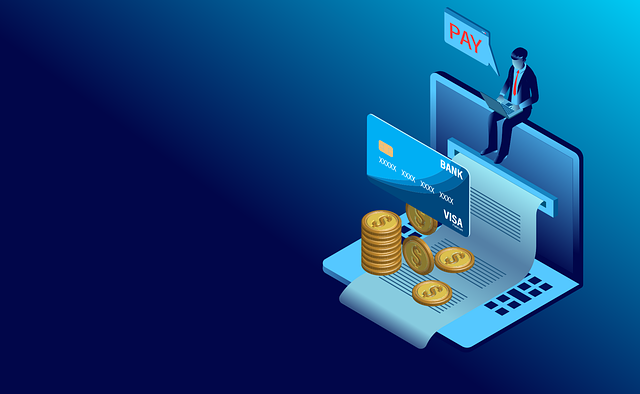Byline: Paul Bartlett, CEO, CloudPay
While the world of work has evolved drastically over the last decade, payroll has arguably fallen behind the curve. In fact, how businesses view employee pay today is outdated and fails to meet the expectations of the modern workforce which, with the UK’s critical skills short labour market, could prove detrimental. People now expect on-demand services in their personal lives, from their shopping experience to their access to entertainment, and this need for a ‘consumerised’ experience has filtered into many business practices. But payroll has yet to catch up.
Financial technology is certainly gaining prominence across the globe as it gradually replaces traditional financial services such as banking, payments and electronic commerce. In fact, a recent fintech market report shows that the global financial technology remit is expected to reach a market value of approximately $324 billion by 2026, growing at an annual rate of around 25.18% over the 2022-2027 forecast period. So, soon enough, payroll will be expected to keep pace with the rest of the fintech field.

A shift in mindset
Ultimately, most employees are consumers and our digitalised world means that consumers are able to instantly access almost anything through an app. Getting to your next destination and accessing a range of takeaways has never been easier with Uber and same day deliveries through Amazon have meant that shopping online has grown in popularity. In an era where instant results are the norm, it should come as little surprise that individuals are now asking why they should wait to access wages they’ve already earnt. With technology making it so easy to consume, why should they wait for payday to get paid for the work they’ve done?
It’s also important to consider how the world of work itself has changed. The pandemic has led to a general consensus that it’s ok to question norms in society, and workers are now expecting more from their employers, including how and where they work. As we all know, mass remote working wasn’t commonplace before the pandemic, but now the benefits that businesses and employees have experienced have resulted in new ways of working, with some countries even making the work from home option a legal right. Eventually, the same could be said for how people get paid as greater flexibility and a better work-life balance rises in demand.
Pay on-demand
In line with the progression of the working world, employees are increasingly beginning to question how and when they get paid. For staff in the UK, the cost-of-living crisis has increased the desire for more flexibility around access to pay. Businesses themselves are also questioning how age-old processes can be improved and we’re seeing more firms seeking to update legacy systems and processes, which has led to demand for digital payment capabilities for employee pay.
However, there’s a fundamental question about paying employees in arrears – why should employees effectively loan money to their employer until payday? It’s now possible to allow employees to effectively choose their own payday (or paydays) with on-demand access to earned wages via a mobile app. Progressive employers, such as Nando’s, are offering this pay on-demand facility as a low-cost, high-value benefit to employees, giving them control and flexibility over how and when they receive their salary.
Nando’s Singapore
In the case of Nando’s Singapore, a brand that revolves around its people, the firm recognised that its payroll system needed to be updated. The main business challenges centred around a highly competitive jobs market, with many more vacancies than people available to work in the country, making it tough to recruit front-line staff. This, coupled with the difficulties of retaining talent when competing with the gig economy, a segment of the workforce known for paying workers frequently, was presenting a significant challenge for the firm. Furthermore, monthly pay cycles were necessitated by Singapore’s requirement for employees to have a monthly payslip to qualify for access to government benefits and the 80% government-owned housing market.
The combination of these challenges and the delicate balance of the need for monthly pay vs. pay flexibility led Nando’s Singapore to look for a more flexible solution. The solution? Pay on demand options for staff. So, what does this change and what does it mean for the firm and its workers?
When a pay on demand solution is in place, Nando’s employees will receive their monthly payslips as usual. There are also no adjustments to existing payroll processes and finance reporting, which means no extra administrative burden on the payroll team. What will change, though, is that Nando’s staff will no longer have to wait until the end-of-month payday to receive wages they’ve already worked for. Pay on demand and pay to card gives employees more control of managing their own cashflow, allowing them to instantly access their earned wages when they need them, via a mobile app rather than requesting pay advances from their employer.
Overall, the decision to seek an earned wage access solution will mean that staff will have flexible pay, supporting Nando’s recruitment and retention efforts while also delivering an enhanced employee value proposition. As Moji Neshat, General Manager at Nando’s Singapore explained, “We know unexpected bills and short-term cashflow challenges can create a lot of stress for our teams. With CloudPay NOW all our team members will be able to access their wages the very next day after working, removing that stressful wait until payday.”
Moving forwards
Sophisticated technology is playing a role in making tedious or labour-intensive processes quicker and easier in our everyday lives, and it can – and should – have the same impact for payroll. The likes of pay on demand may appear on the surface to be complex to manage, but can in fact streamline processes.
When we think back to when online payments were first introduced, there were understandable concerns around the change – but very few of us today could imagine life without mobile banking, and the ease and speed it brings to making and receiving payments. Why shouldn’t payroll follow the same path?


